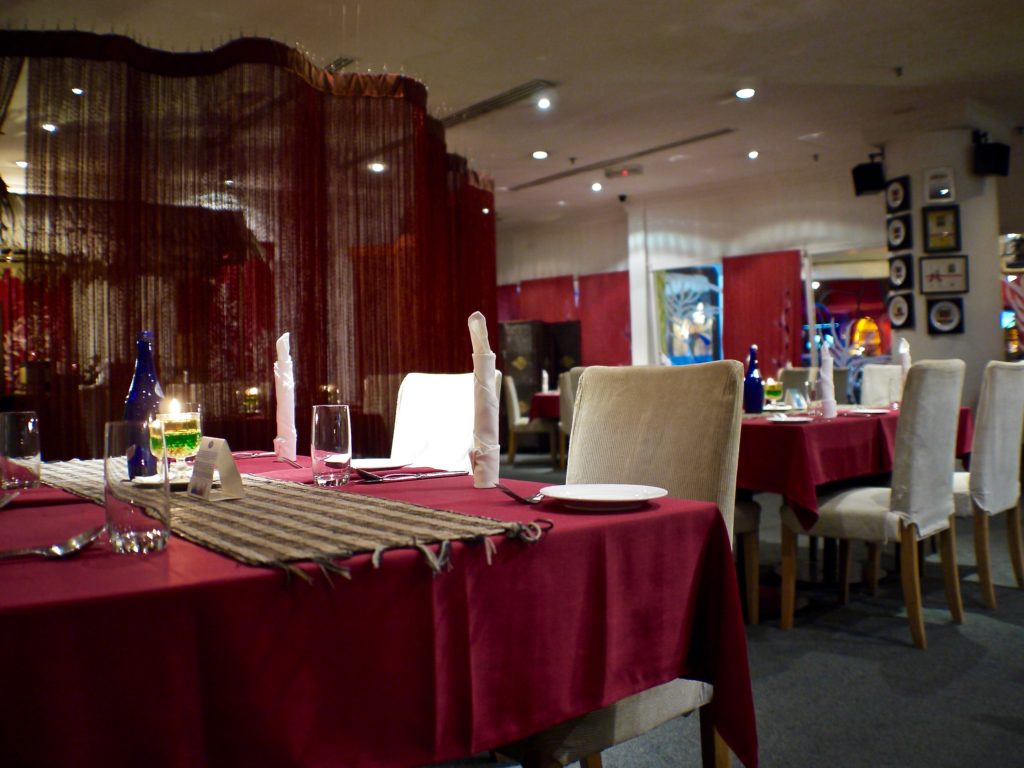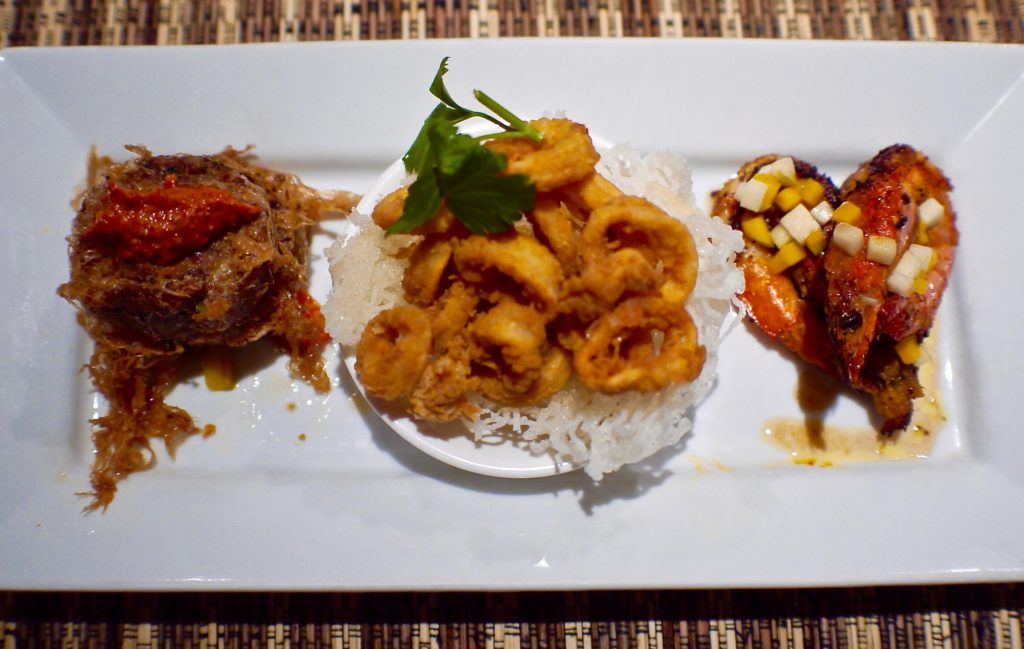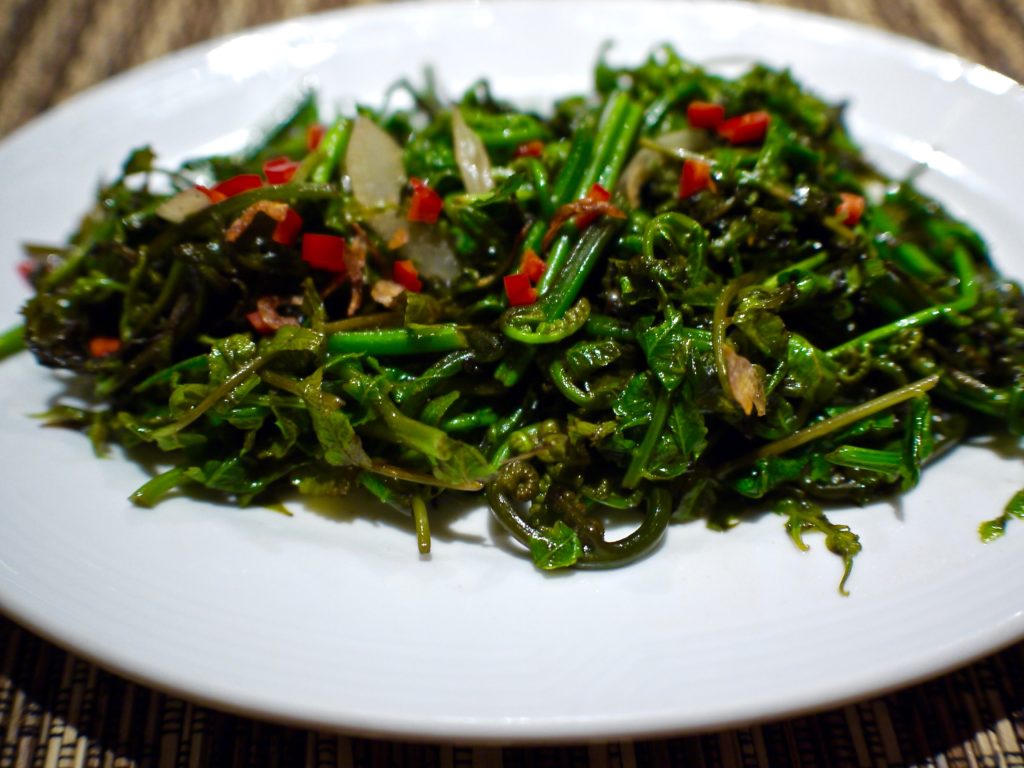
Tucked within the corner of Starhill Gallery on Jalan Bukit Bintang is a little traditional Malay restaurant that lives up to its name… Enak Kuala Lumpur. Delicious indeed, the restaurant serves contemporary masakan kampung with a refined twist. This restaurant serves to elevate the dining experience of traditional Malay dishes, a refinement that is not very common in Malaysia. Based primarily on the southern state of Johor cuisine, Enak brings flavours you can only achieve passed down from generation to generation, but with fine cuts and great quality.
As you walk into the restaurant you are greeted with the awnings and wood and bamboo carvings that you brings you back to a simpler time, which carries a great nostalgic feeling of a nicely decorated rural village. A retreat from the hustle and bustle of the city, the restaurant evokes a sense warmth and peace you do not normally find in Malay restaurants.

Headed by Owner Sherena Razaly, the recipes from the restaurant are personally handed by from one generation to another, mostly from her family’s own cook book. Most of the ingredients used have to be sourced from all over the country, and Enak sticks to one mantra, if they can’t get the right herbs and spices needed, they take the dish off the menu. This ensures that the quality of the dishes are kept to a high standard at all times. When asked what her favourite dish is off the menu, Razali quips: –
“My favourite dish on the menu would have to be the dendeng. This is a recipe passed down from my mother and she is very specific on the way it has to be cooked. We wanted to give our guests a better experience, and therefore only use the best quality ingredients. The beef in the dendeng is made from fine cut New Zealand striploin to ensure that you are able to have the best experience.” — Sherena Razali, Owner of Enak KL.
The Dining
Malay meals are not served course by course, but usually altogether. A common experience is for all the dishes to be served at the same time, usually accompanied with rice. Most meals would consist of chicken, beef and an assortment of vegetables. It is also common for curries to be served with the rice. As Malay cuisine is generally cooked by the Muslim population, it is usually halal.

The first dish, an appetiser, was Keropok Empingan (Melinjo Crackers). Empingan, or emping, is a traditional Indonesian snack that made from melinjo nuts. The nuts are first dried and pounded flat which gives it its iconic shape. These crackers are then fried, which is important that it does not turn out too greasy. A slight bitter tinge to the bite, these crackers are imported from Indonesia at Enak to ensure that even the simplest dishes pack a good flavour.

The second dish, an appetiser platter, was the Enak KL Appetiser Menu, which consisted of signatures such as the Cumi-Cumi Goreng (Fried Squid), a turmeric marinated and deep fried squid, Udang Bakar Serai (Roasted Lemongrass Prawns), succulent grilled prawns in lemongrass and mango salsa, and Perkedil (Potato Cakes), a potato cake made with mashed potato, minced meat and traditional spices. This dish had a nice selection of different textures and flavours, sweet, savoury and sour. The squid was nice and crispy and the prawns were seasoned well.

Rice was served intermittently as most Asian cuisine, with a selection of different sambal (spicy sauce), sambal hijau (green sambal), terasi (shrimp paste sambal) and sambal merah (red sambal).

The third dish, a salad, was the Pucuk Paku Cendawan Sisik (Wild Fern with Forest Mushrooms). This dish is made using wild forest mushrooms and wild fern, simply flavoured with garlic and onion. As pucuk paku, or wild fern, are hard to come by fresh, this dish is only served if the produce is available. A sharp spicy tinge to the woody and curly textures, this dish is a favoured Malay dish. A key note that Enak provides is that this dish only uses the young shoots of the fern, where some places may serve the older variety, which tends to be too woody.

The fourth dish, a salad, was the Kerabu Ikan Pari (Stingray Salad). The stingray is first grilled and then pulled apart forming firm but delicate strands of fish. This dish is then combined with various vegetables and seasoned with fish sauce giving it a nice cured sweet and sour finish. Light and flavourful.

The fifth dish, a seafood dish, was the Sotong Sumbat Kelapa Muda (Squid stuffed with Young Coconut). This dish consisted of squid that are marinated, and then stuffed with the young coconut trimmings, delicate in flavour and texture. The sauce that accompanied it was a mild and grainy coconut sauce, the kind you find more common in northern Malaysian dishes. The squid is then grilled charring on the outside, giving a nice umami punch.

The sixth dish, a seafood dish, was the Botok Botok (Steamed Mackerel in Leaves). This dish is a uniquely Johorean dish of Javanese origin, made with ground aromatics, 9 different types of leaves including daun kesum (laksa leaf or Vietnamese mint), cassava shoots, and then wrapped and steamed in papaya leaf. As a fish lean in fat, this dish is great for those who are looking for something a little lighter than usual, yet have a taste of fresh herbs. As most lean fish, this dish is expected to be a little on the dryer side.

The seventh dish, a meat dish, was the Daging Goreng Dendeng (Fried Dried Beef). This dish of Minangkabau origin is preserved with sugar and spices, and the fried with an assortment of herbs and spices. The use of high grade striploin ensures that this very traditional dish is elevated to new heights as the meat to fat ratio guarantees that its not too dry as with most dried beef. The still tender and flavourful seasoned beef just comes apart in your mouth with each bite as the mixture of sweet and spicy keeps you coming back for more. Our favourite dish on the menu and definitely a must-try.

The eight dish, a dessert, was the Ketayap Mangga (Mango Crepe). Thin slices of sweet mango were wrapped in a pandan (screwpine) flavoured crepe accompanied by a gula Melaka (palm sugar) and coconut milk sauce. This dish is definitely for one with a sweet tooth as it packs a nice sweet and tangy flavour.

The ninth dish, a dessert, was the Manisan Kelapa Muda Enak (Enak Young Coconut Dessert). Young coconut served in a velvety custard with the right sweetness from the coconut topped with a burnt meringue. This dish has the right balance of sweetness, tinge of sour from the coconut and all the goodness you would not expect. This has to be one of our favourite dishes on the menu, if not, one of the best desserts we have tried.

The Enak KL Experience
There are almost no Malay fine dining restaurants in Kuala Lumpur, and although Enak doesn’t boast of being one, they certainly are offering an elevated experience when it comes to traditional Malay cooking. From a mixture of different regional Malay cuisines, Enak becomes a one stop for you to try a bit of everything, all without the compromise of quality. You can have a look at Enak KL’s Menu for their latest fare. When asked how do they maintain their standards to presenting their dishes, Razaly says: –
“My mother was a very strict woman when it comes to preserving our cooking traditions. She was a great cook and I really wanted to save her recipes. In Malay culture, when someone is good at cooking we say they have good air tangan. We want to preserve our culture in the best way we know how, and food speaks to everyone.”
If you’re looking for a different dining experience to savour what a good traditional Malay cuisine menu is like, then do head on over.
For our review in Malay, please see Enak KL: Resipi Masakan Kampung.
LG2, Feast Floor,
Starhill Gallery,
181 Jalan Bukit Bintang,
55100 Kuala Lumpur.
+603 2141 8973
Opening Hours:
12:00 pm to 12.00 am
| PHOTOGRAPHY BY: LILA BAKAR | WEBSITE: ENAK KL |